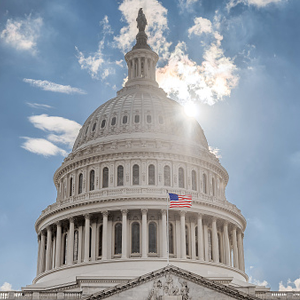Notice
Due to a lapse in appropriations, this website is not being updated.
Bureau of Economic Analysis
U.S. International Investment Position, 2nd Quarter 2025
The U.S. net international investment position, the difference between U.S. residents’ foreign financial assets and liabilities, was -$26.14 trillion at the end of the second quarter of 2025, according to statistics released today by the U.S. Bureau of Economic Analysis. Assets totaled $39.56 trillion, and liabilities were $65.71 trillion. At the end of the first quarter, the net investment position was -$24.65 trillion (revised).
Principal Federal Economic Indicators
Noteworthy
The Latest
December 2021 Trade Gap is $80.7 Billion
The U.S. monthly international trade deficit increased in December 2021 according to the U.S. Bureau of Economic Analysis and the U.S. Census Bureau. The deficit increased from $79.3 billion in November (revised) to $80.7 billion in December, as imports increased more than exports. The previously published November deficit was $80.2 billion. The goods deficit increased $3.2 billion in December to $101.4 billion. The services surplus increased…
U.S. International Trade in Goods and Services, December 2021
The U.S. monthly international trade deficit increased in December 2021 according to the U.S. Bureau of Economic Analysis and the U.S. Census Bureau. The deficit increased from $79.3 billion in November (revised) to $80.7 billion in December, as imports increased more than exports. The previously published November deficit was $80.2 billion. The goods deficit increased $3.2 billion in December to $101.4 billion. The services surplus increased $1…
Reposted: Personal Income by State, 3rd Quarter 2021
Note: Reposted Feb. 3, 2022, to correct state personal income statistics for the third quarter of 2021 back to the first quarter of 2016 due to a data processing error involving industry wage estimates. For more information, see the technical note.
Reposted: Gross Domestic Product by State, 3rd Quarter 2021
Note: Reposted Feb. 3, 2022, to correct state gross domestic product statistics for the third quarter of 2021 back to the first quarter of 2016 due to a data processing error involving industry wage estimates. GDP estimates for the first and second quarters of 2021 also were updated to include industry earnings estimates updated with the Bureau of Labor Statistics’ Census of Employment and Wages.
Personal Income and Outlays, December 2021
Personal income increased$70.7 billion, or 0.3 percent at a monthly rate, while consumer spending decreased$95.2 billion, or 0.6 percent, in December. The increase in personal income primarily reflected an increase in compensation of employees. The personal saving rate (that is, personal saving as a percentage of disposable personal income) was 7.9 percent in December, compared with 7.2 percent in November.
Personal Income and Outlays, December 2021
Personal income increased $70.7 billion, or 0.3 percent at a monthly rate, while consumer spending decreased $95.2 billion, or 0.6 percent, in December. The increase in personal income primarily reflected an increase in compensation of employees. The personal saving rate (that is, personal saving as a percentage of disposable personal income) was 7.9 percent in December, compared with 7.2 percent in November.
Gross Domestic Product, Fourth Quarter and Year 2021
Real gross domestic product (GDP) increased at an annual rate of 6.9 percent in the fourth quarter of 2021, following an increase of 2.3 percent in the third quarter. The acceleration in the fourth quarter was led by an upturn in exports as well as accelerations in inventory investment and consumer spending. In the fourth quarter, COVID-19 cases resulted in continued restrictions and disruptions in the operations of establishments in some…
Gross Domestic Product, Fourth Quarter and Year 2021 (Advance Estimate)
Real gross domestic product (GDP) increased at an annual rate of 6.9 percent in the fourth quarter of 2021, following an increase of 2.3 percent in the third quarter. The acceleration in the fourth quarter was led by an upturn in exports as well as accelerations in inventory investment and consumer spending. In the fourth quarter, COVID-19 cases resulted in continued restrictions and disruptions in the operations of establishments in some parts…
November 2021 Trade Gap is $80.2 Billion
The U.S. monthly international trade deficit increased in November 2021 according to the U.S. Bureau of Economic Analysis and the U.S. Census Bureau. The deficit increased from $67.2 billion in October (revised) to $80.2 billion in November, as imports increased more than exports. The previously published October deficit was $67.1 billion. The goods deficit increased $15.1 billion in November to $99.0 billion. The services surplus increased $…
U.S. International Trade in Goods and Services, November 2021
The U.S. monthly international trade deficit increased in November 2021 according to the U.S. Bureau of Economic Analysis and the U.S. Census Bureau. The deficit increased from $67.2 billion in October (revised) to $80.2 billion in November, as imports increased more than exports. The previously published October deficit was $67.1 billion. The goods deficit increased $15.1 billion in November to $99.0 billion. The services surplus increased $2.1…




